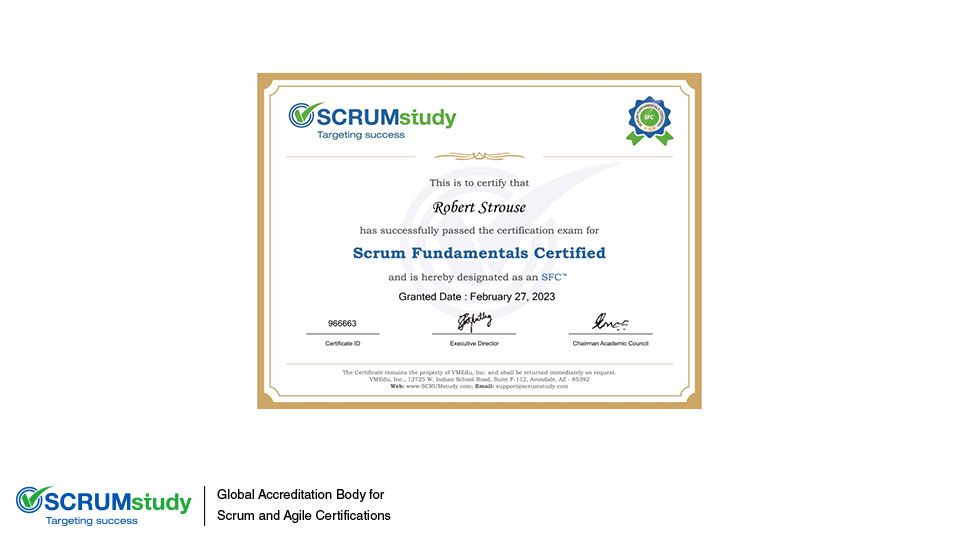Scrum Master certification exam structure
Posted by SCRUMstudy® on July 10, 2024
Categories: Agile Certification SBOK® Guide Scrum Scrum Guide Scrum Master Training
The Scrum Master certification exam typically consists of multiple-choice and true/false questions designed to test a candidate's understanding of Scrum principles, practices, and the role of the Scrum Master. The exam covers key areas such as Scrum framework, roles, events, artifacts, and the application of Scrum in real-world scenarios. Candidates are usually given a set amount of time, often around 120 minutes, to complete the exam, and a passing score is required to obtain certification. Preparation for the exam often involves studying the SBOK Guide, attending a certified training course, and practicing with sample questions.
Earning a Scrum Master Certification offers a multitude of benefits. Firstly, it provides a comprehensive understanding of the Scrum framework, including its principles, roles, and practices, enabling professionals to effectively facilitate Scrum processes within their organizations. Additionally, certification validates one's expertise in Agile methodologies, enhancing career prospects and opening doors to diverse job opportunities across various industries. Moreover, becoming a certified Scrum Master demonstrates a commitment to continuous learning and professional development, positioning individuals as valuable assets to their teams and organizations. Overall, the Scrum Master certification exam benefits professionals by equipping them with the knowledge and skills needed to drive successful Agile transformations and deliver value to stakeholders.
To register for the Scrum Master certification exam through SCRUMstudy, candidates must first choose the appropriate certification level based on their experience and career goals. After selecting the desired course, they need to complete the registration process on the SCRUMstudy website, which involves providing personal details and payment information. SCRUMstudy offers various study materials and courses to help candidates prepare for the exam. Once registered, candidates receive access to these resources and can schedule their exam at their convenience. For successful registration, it is essential to follow all instructions provided by SCRUMstudy to ensure eligibility and readiness for the certification exam.
The biggest positive of a formal Scrum training is that you learn everything in a controlled environment. You meet people who are also there to learn about Scrum and in case you have common background, it helps to understand the process and difficulties of implementation from outsider’s point of view. A formal training also helps you understand about the mistake which you may make due to the traditional project management concepts rooted in you.
The main purpose of any certification is to impart a common baseline of the knowledge. These Scrum certifications, compared to any other project management certifications have a very easy test. You should remember that getting a Scrum certificate is way easier than the implementing actual Scrum framework.
Scrum and Agile methodologies offer significant flexibility in implementation. However, it's crucial to maintain the core principles of the process. Project managers who modify essential elements of Scrum are often referred to as "Scrumbut." It is generally recommended to adopt Scrum in its entirety initially to fully understand its mechanics. Once you have a solid grasp of the framework, you can then make informed decisions about potential adjustments. Over time, you may realize that no changes are necessary.
You need to understand that nothing is more valuable than experience. Scrum or Agile Certification may only add some credibility and marketability to the individual.

